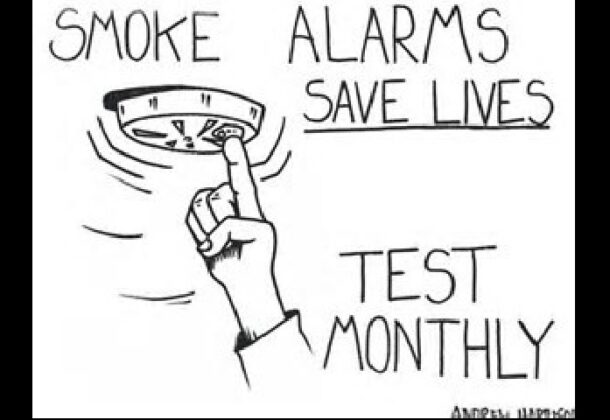Homeowners Urged to Check Smoke Alarms

The National Fire Protection Agency estimated there were 1,291,500 fires in the US in 2020. These fires caused an estimated 3,704 civilian deaths, 16,600 civilian injuries, and $14.8 billion in direct property damage. On average, a fire department responded to a fire somewhere in the US every 24 seconds in 2019. A home structure fire was reported every 93 seconds, a home fire death occurred every three hours and 10 minutes, and a home fire injury occurred every 43 minutes.
- Three of five home fire deaths result from fires in properties without working smoke alarms.
- Install smoke alarms on every level of your home, inside bedrooms and outside sleeping areas.
- Test smoke alarms every month. If they’re not working, replace them.
- Talk with all family members about a fire escape plan and practice the plan twice a year.
- If a fire occurs in your home, GET OUT, STAY OUT and CALL FOR HELP.
A Maryland smoke detector law requires the replacement of any battery-only operated smoke alarm that is more than 10 years old. Homeowners are required to install an alarm that has a sealed-ion battery.
For local information on preparedness and other safety topics contact the St. Mary’s County Department of Emergency Services or visit prepare.stmarysmd.com.
The Department of Emergency Services also reminds citizens about the critical importance of having carbon monoxide detectors in homes.
Carbon monoxide is a gas that you cannot see, taste, or smell and in the home. Fuel-powered devices can provide benefits to families when used correctly, and these devices emit carbon monoxide. Subsequently, carbon monoxide poisoning can result from faulty furnaces or other heating appliances, portable generators, water heaters, clothes dryers, or cars left running in garages. Carbon monoxide poisoning can cause severe side effects or death.
Make sure your home has a carbon monoxide alarm. If you don’t have one, get one. As with smoke alarms, you should have a carbon monoxide alarm on every level of your home, especially near sleeping areas, and keep them at least 15 feet away from fuel-burning appliances. You won’t know that you have a carbon monoxide leak without a working alarm. Remember to test alarms regularly and replace them every five to seven years, depending on the manufacturer’s label.
If your carbon monoxide detector alarm goes off, immediately move outdoors. Account for everyone inside your home. Call 911 or the fire department and remain outside until emergency personnel arrives to assist you.























